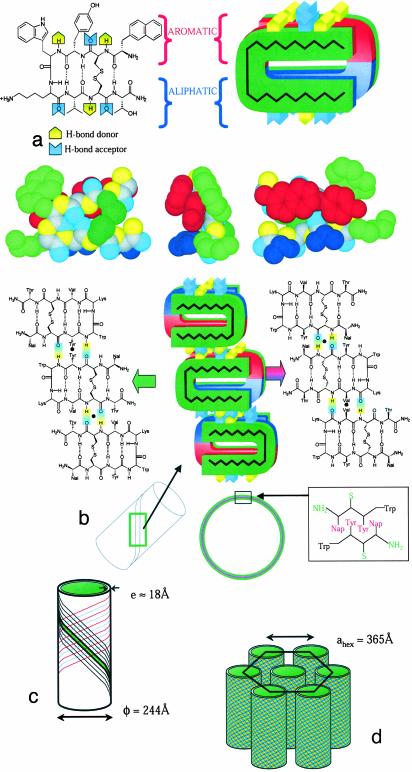Fig. 5.
Schematic view of the different hierarchical levels in the self-assembly of Lanreotide-acetate nanotubes in water. (a)(Left) The Lanreotide molecule in the β-hairpin planar conformation, which is stabilized by the disulfide bridge, the turn, and intramolecular hydrogen bonds. (Right) Interaction between two Lanreotide molecules within the wall (bilayer) of the nanotubes. (Bottom) CPK models of a conformation in agreement with experimental data. The segregation of aromatic residues (red) from aliphatic residues (blue) and from hydrophilic region (green) is remarkable. (b) The structure of a filament with two different β-sheet fibers superimposed with their C2 2-fold axes (black circles) meeting together. The segregation between aliphatic/aromatic residues is conserved within the filament organization. (Inset) Packing of the aromatic residues within the β-sheet fibers. (c) Self-assembly of 26 filaments to form a nanotube. (d) Liquid crystalline hexagonal columnar phase formed by the nanotubes.

